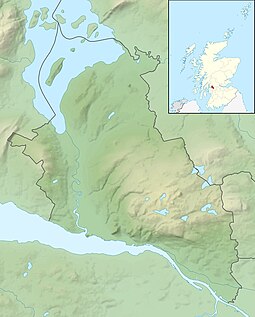| Scottish Gaelic name | Innis Chonachain |
|---|---|
| Meaning of name | The Colquhoun's Island |
| Location | |
| OS grid reference | NS375918 |
| Coordinates | 56°05′28″N4°36′43″W / 56.091°N 4.612°W |
| Physical geography | |
| Island group | Loch Lomond |
| Area | 35 ha [1] |
| Area rank | (Freshwater: 12) [2] |
| Highest elevation | 50 m |
| Administration | |
| Council area | Argyll and Bute |
| Country | Scotland |
| Sovereign state | United Kingdom |
| Demographics | |
| Population | ~7-10 Wallabies |
| References | [3] [4] |
Inchconnachan (Innis Chonachain in Gaelic, meaning 'The Colquhoun's Island') is an island in Loch Lomond in Scotland, in the Trossachs National Park. [5] It is accessible by boat from the village of Luss on the south side of the Loch.
Contents
The island is uninhabited and is an Area of Special Scientific Interest and a Special Area of Conservation.


